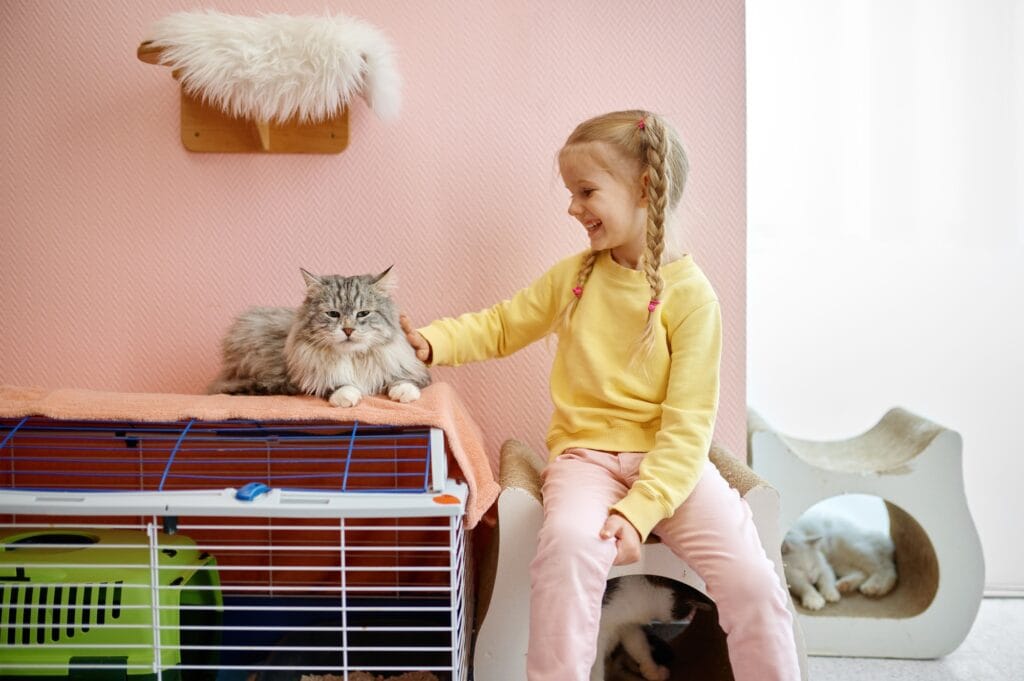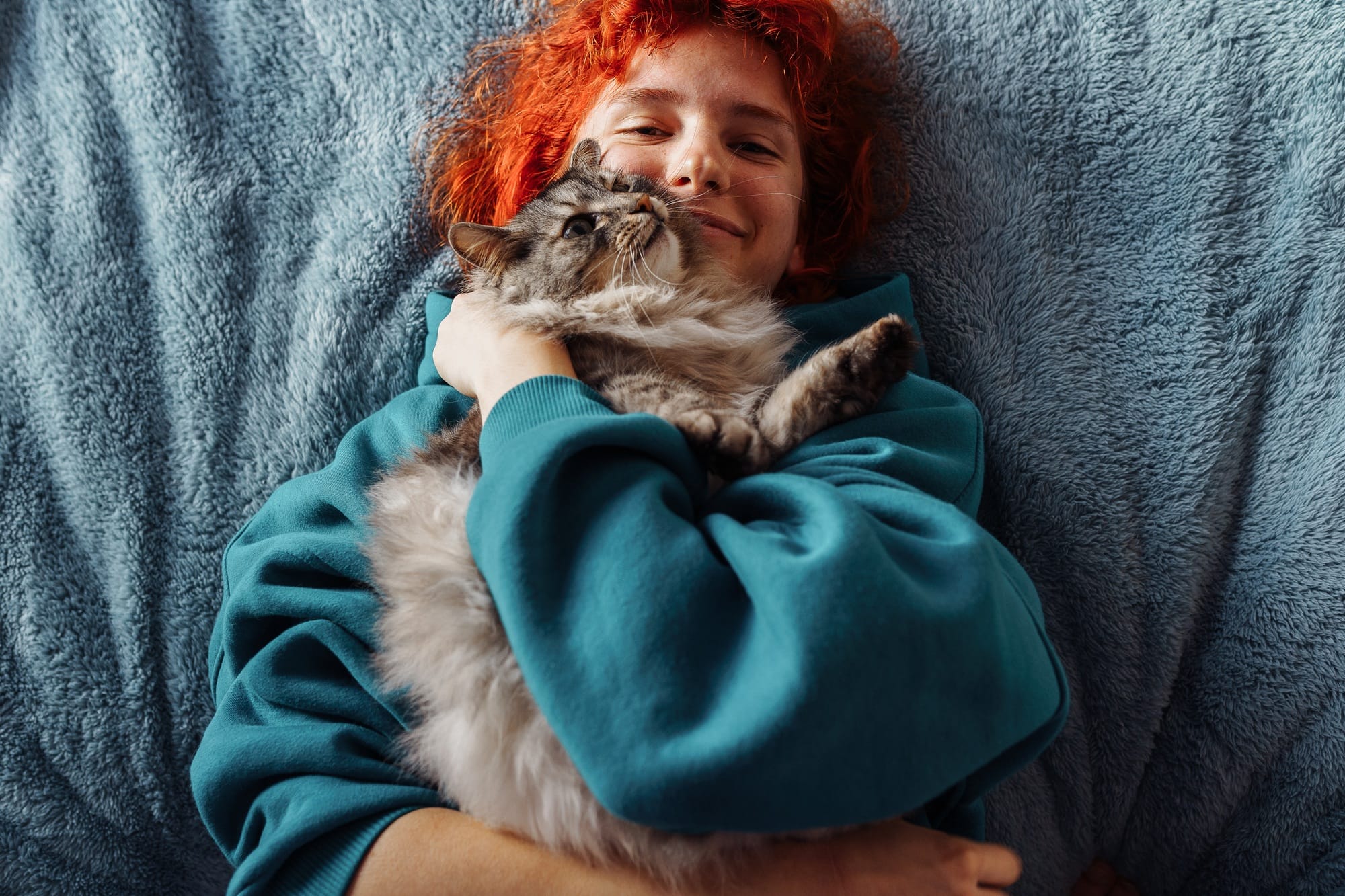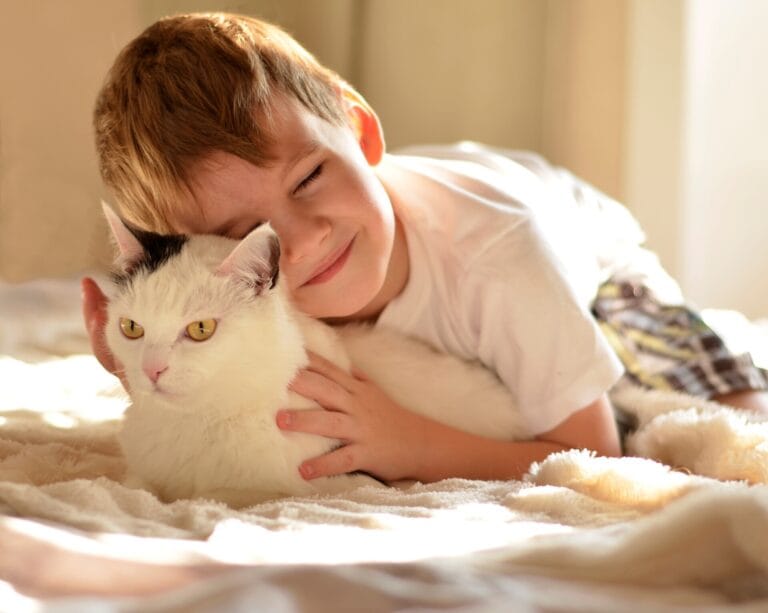Cats: the mysterious, sassy, and occasionally aloof overlords of our homes. If you’ve ever found yourself staring into your cat’s eyes, wondering if they love you back or are plotting your demise, you’re not alone. But bonding with your feline friend doesn’t have to be a riddle. With a bit of understanding, patience, and well-timed chin scratches, you can become your cat’s favorite human. Here’s how!

Learn to Speak “Cat”
Your cat isn’t going to learn English anytime soon, so it’s up to you to crack their code. Cats communicate using body language, vocalizations, and sometimes a sharp “nope” from their claws.
- Tail Talk: A tail held high signals confidence and happiness. If it’s twitching, though, step away—they’re annoyed.
- Slow Blinks: That dreamy-eyed, slow-blink gaze is your cat’s way of saying, “I trust you.” Return the favor with your own slow blink.
- Purring Isn’t Always Love: While purring often means contentment, it can also indicate anxiety. Context is everything!
Pro Tip: Start “talking back” to your cat. Respond to their meows or mimic their slow blinks—you’ll seem less like an alien and more like a trusted companion.
Play Like a Cat Whisperer
If you think waving a toy mouse once is enough, think again. Playtime mimics hunting, which is vital for a cat’s mental and physical health.
- Use interactive toys like feather wands to channel your cat’s inner predator.
- Don’t make it too easy—cats love a challenge. Let the “prey” escape a few times before they catch it.
- Play in short bursts, about 10-15 minutes, to prevent overstimulation.
Hook: The more you play, the more your cat associates you with fun and happiness. You’re basically becoming their favorite TV show.
Respect Their Space (and Mood Swings)
Cats are independent creatures, which means they need their space. Respect their boundaries, and they’ll respect you back.
- Don’t Force Cuddles: If your cat pulls away, don’t chase them. Let them come to you when they’re ready.
- Create Safe Zones: Cats love hideouts—set up cozy spots around your home where they can retreat.
- Learn Their Mood: Happy cats have relaxed ears and a soft gaze. An irritated cat will flatten its ears or flick its tail like a whip.
Relatable Scenario: Ever pet your cat too long, and suddenly, they’re biting? That’s overstimulation. Learn their limits and stop petting before the “cat attack.”
Bribe Them (With Love and Treats)
The way to your cat’s heart is through their stomach. Use high-value treats to reinforce positive interactions.
Reward them for coming to you, using their scratching post, or enduring a brushing session.
Mix treats with affection: a gentle stroke here, a tasty morsel there.
Avoid overfeeding—love shouldn’t lead to a trip to the vet for weight management!
Funny Insight: Treats are the universal “I forgive you” currency for accidentally sitting in their favorite spot.

Be Consistent and Patient
Bonding doesn’t happen overnight. It takes time for your cat to see you as their human.
- Stick to a daily routine—cats thrive on consistency. Feed them at the same times and make playtime predictable.
- Always approach them calmly; sudden movements can scare them.
- Celebrate small victories, like the first time they curl up on your lap.
Humor Alert: Patience is key. Cats are like tiny, furry teenagers—they’ll warm up when they feel like it.
Love Them on Their Terms
Cats may not wag their tails like dogs, but they show love in quieter ways—a head bump here, a nap near you there. The secret to bonding with your cat is respecting their unique personality and showering them with love (but not too much, or you’ll hear about it).





